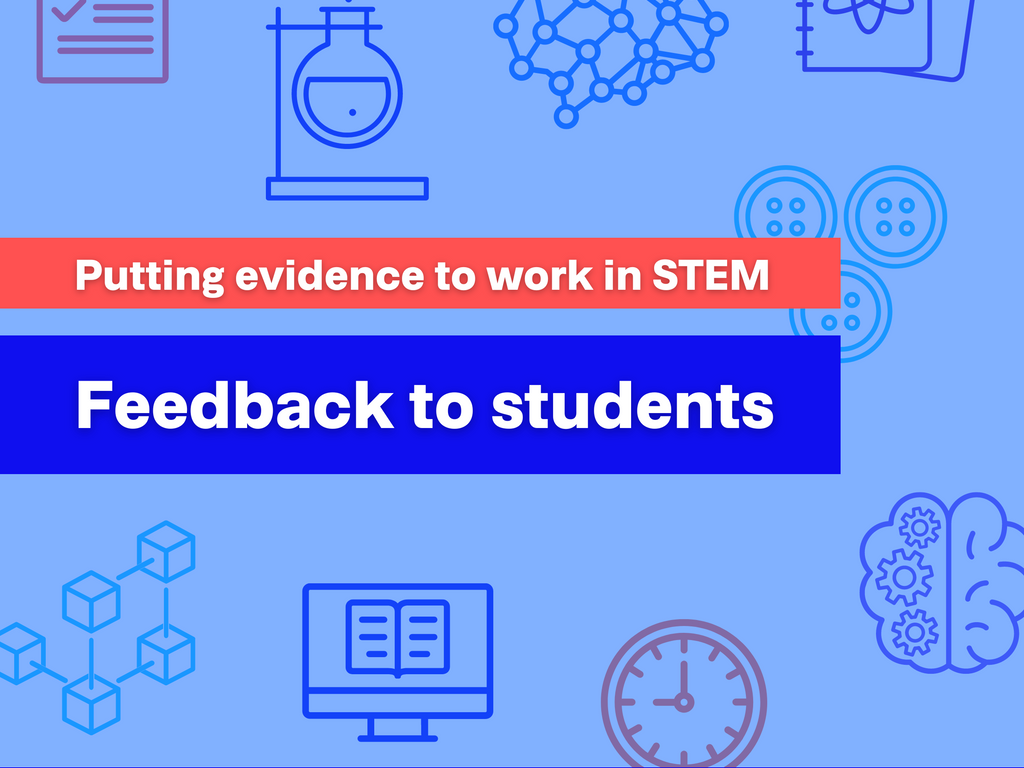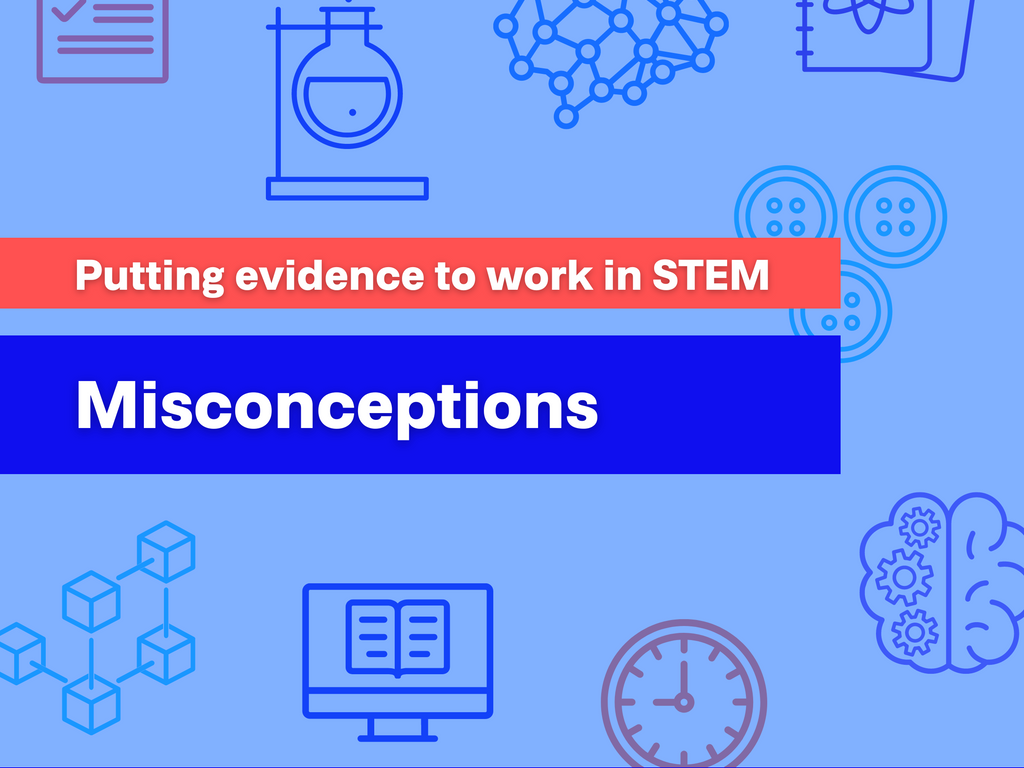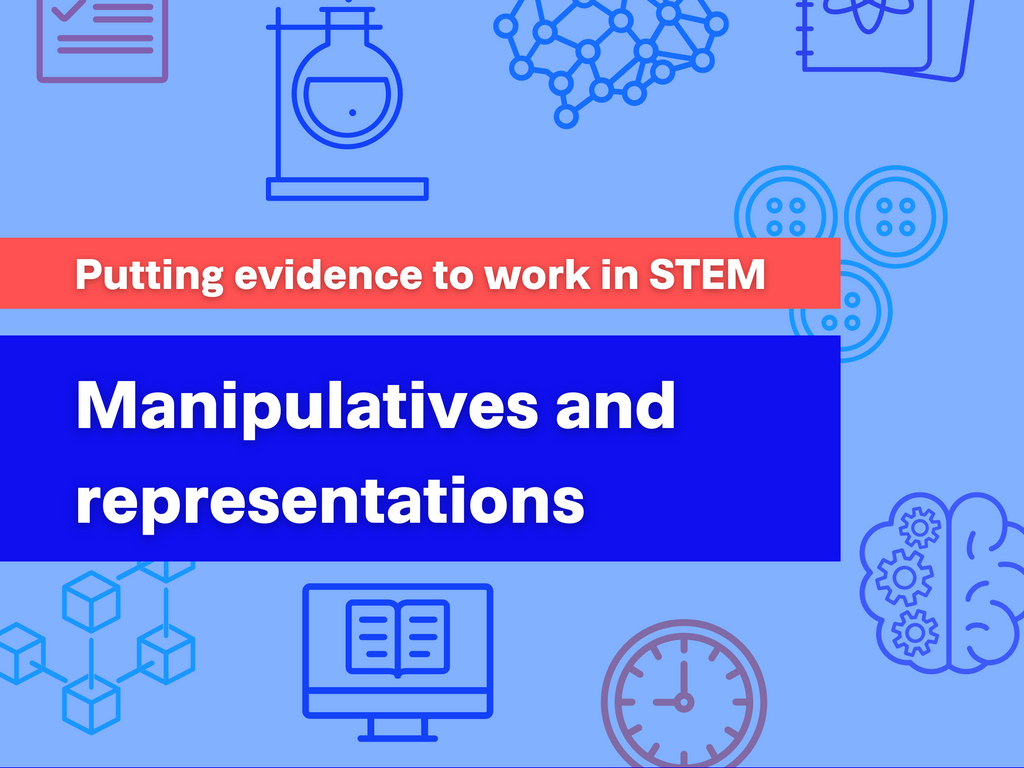E4L’s ‘Putting evidence to work in STEM’ series draws on the best available evidence to support curriculum leaders and classroom teachers of maths and science.

Blog
Putting evidence to work in STEM: feedback
Drawing on the best available evidence to implement effective feedback in maths and science teaching.


Blog
Putting evidence to work in STEM: misconceptions
Drawing on the best available evidence to address misconceptions in maths and science teaching.


Blog
Putting evidence to work in STEM: vocabulary
Drawing on the best available evidence to address misconceptions in maths and science teaching.


Blog
Putting evidence to work in STEM: manipulatives and representations
Drawing on the best available evidence on using manipulatives and representations in maths and science teaching.

Metacognition and self-regulation
Very high impact for very low cost based on extensive evidence
Cost
Evidence
Impact (months)
+7
Feedback
Very high impact for very low cost based on extensive evidence
Cost
Evidence
Impact (months)
+6
Peer tutoring
High impact for very low cost based on extensive evidence
Cost
Evidence
Impact (months)
+5
Guidance Reports
Improving secondary science
Seven recommendations to support schools to improve secondary science.
Secondary
Guidance Reports
Improving mathematics in the early years with children aged 3 – 7 years
Five recommendations to improve mathematics in early learning and lower primary school settings.
PrimaryEarly Childhood
Guidance Reports
Improving mathematics in upper primary and lower secondary
Eight recommendations to support schools improve mathematics in upper primary and lower secondary.
SecondaryPrimary
Guidance Reports
Metacognition and self‑regulated learning
A guide offering seven recommendations to support schools to teach metacognition and self-regulated learning.
SecondaryPrimary